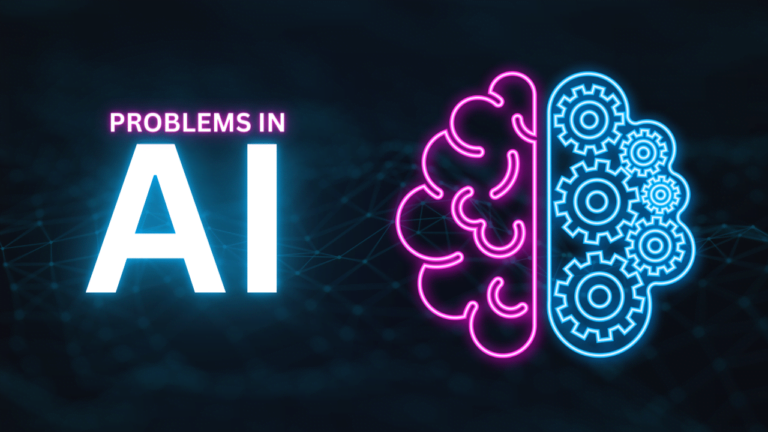Introduction
Restaurant Technology has become a disruptive force in the ever-changing food industry, altering how we eat and enjoy dining. From the rise of food delivery apps to artificial intelligence in meal planning, technology has revolutionized how we experience food. With advancements in virtual and augmented reality, even dining itself is being transformed into a multisensory experience.
Incorporating restaurant technology has changed customer relations, streamlined operations, and redefined culinary inventiveness. Examples include automated ordering systems, virtual reality dining experiences, intelligent kitchen appliances, robot chefs, delivery drones, etc.
The integration of technology has significantly improved efficiency in restaurant operations. Automated ordering systems eliminate errors while increasing speed and creating virtual reality eating experiences. In this blog post, we’ll look at the innovative developments in restaurant technology, discuss how they’re changing how we eat, and discuss their potential impact on the dining experience.
1.Mobile Ordering and Delivery Apps
The creation of mobile apps has significantly changed the restaurant industry. Many restaurants today offer mobile ordering applications enabling customers to place orders and book reservations from their smartphones. Personalized recommendations, real-time order tracking, and loyalty programs are frequently found in these apps, enhancing the overall dining experience.
These features make it easier for customers to access information, place orders, and pay for their meals. These apps have entirely changed how people eat out. By offering convenience, effectiveness, and personalized experiences. These apps have revolutionized the way people eat out by enhancing the ease and enjoyment of the dining experience.
Likewise, consumers may now enjoy restaurant-quality food in the comfort of their own homes thanks to the proliferation of food delivery applications. By enabling users to order their favorite foods from various restaurants and have them delivered right to their doorstep, these applications have revolutionized the traditional eating experience. It has boosted access to high-quality food and allowed individuals to sample various cuisines without leaving their homes.
Integration of geolocation technology offers precise and effective delivery services, boosting revenue and customer happiness. Additionally, these applications frequently offer real-time delivery monitoring, letting customers know when their food will arrive. This degree of simplicity and openness has improved users’ overall dining experiences.
2.Digital Menus and Self-Service Kiosks
Restaurants now favor digital alternatives over conventional paper menus. Digital menus have several benefits, including dynamic pricing that may be changed according to demand, the time of day, or the availability of seasonal ingredients.
Additionally, digital menus can be easily updated to reflect any changes in the menu or pricing. This flexibility allows businesses to stay competitive and cater to customer preferences more effectively. It also reduces the need for printing and distributing physical menus. Ultimately saves time and resources and helps reduce waste.
Customers may conveniently order and pay for their food without engaging with workers, thanks to the popularity of self-service kiosks. With this technology, waiting times are cut, order mistakes are reduced, and consumers may personalize their orders to suit their tastes.
3.Contactless Payment Solutions
The COVID-19 pandemic made it easier for restaurants to switch to contactless payment methods. Most people now use mobile wallets, QR code payments, and NFC technology, which reduces the need for physical contact and makes payments safer. These methods are popular with customers and restaurant owners because they are easy to use and quick. It also helps to prevent fraud and protect sensitive customer information.
4.Internet of Things (IoT) in Kitchen Operations
The Internet of Things (IoT) makes kitchen operations more data-driven and efficient. Smart kitchen appliances can track how much food is in stock, when it goes wrong, and automatically place orders to restock. It cuts down on waste, makes the best use of ingredients, and makes it easier to keep track of stock. Smart kitchen appliances can also suggest recipes based on the available ingredients.
IoT-enabled devices can also talk to each other, which speeds up the cooking process. For example, a smart oven could get information from a connected scale about how much something weighs and then change the cooking time and temperature to ensure the food is always cooked perfectly.
5.Robotics and Automation in Restaurant Technology
Kitchen and front-of-house robots are becoming increasingly common. Robots in the kitchen can do things like slicing vegetables, flipping burgers, and constructing pizzas with consistent quality, giving human cooks more time for invention and creativity. Robots in the kitchen are revolutionizing the culinary industry. They can carry out tasks previously reserved for skilled chefs, such as quickly and accurately dicing and slicing ingredients.
Robotic servers are being tested in several restaurants to ensure customers receive their meals quickly and accurately. These robots may still be in the testing phase. Still, they show that automation in the restaurant industry is on the horizon.
6.Augmented and Virtual Reality Dining
Augmented and virtual reality technologies are creating dining experiences that are more immersive than ever before. By superimposing digital images of dishes onto physical menus, augmented reality menus can improve the ordering process by allowing consumers to see exactly how their food will appear before placing an order. It leads to a more satisfying dining experience. Additionally, augmented reality menus can provide additional information about the dishes, such as ingredients, nutritional values, and customer reviews.
Diners are transported to virtual environments while participating in virtual reality culinary experiences. This technology enables restaurants to offer distinct themes and ambiances, creating a multisensory dining experience. Diners could, for instance, virtually tour a tropical beach while enjoying seafood dishes or a vineyard during a wine-tasting experience.
7.Data Analytics for Personalization
Customer data collection and analysis have become vital tools for eateries looking to customize their offerings. Restaurants can gain essential insights into their customers’ tastes, dining patterns, and feedback through loyalty programs, smartphone apps, and internet platforms.
With this data, restaurants can tailor their menus, promotions, and marketing strategies better to meet the needs and expectations of their target audience. Personalization creates a more engaging and satisfying dining experience, fostering customer loyalty and repeat visits.
Restaurants can also send customized discounts and promotions directly to their consumers using customer data, boosting their likelihood of returning and making repeat purchases. Furthermore, personalized recommendations based on previous orders or tastes can help consumers discover new meals or items they may appreciate, enriching their dining experience even further.
8.Sustainable Practices and Food Technology
As sustainability becomes a primary concern in the food business, technology is vital in promoting environmentally friendly practices. Technology drives innovation toward more sustainable food production, from smart agriculture techniques that maximize water usage and prevent food waste to plant-based meat substitutes and lab-grown meats. These advancements are crucial to addressing the global food crisis and reducing the food industry’s carbon footprint. They have the potential to revolutionize the way we produce and consume food.
Restaurants are rapidly embracing environmentally friendly measures such as composting food waste, utilizing biodegradable packaging, and installing energy-efficient appliances. Customers are also more likely to support environmentally conscious businesses, creating a positive cycle of eco-friendly initiatives in the food industry.
Conclusion
The future of restaurant technology is exciting and disruptive, with limitless opportunities for improving how we eat and dine. Technology is profoundly transforming the food sector, from digital menus and self-service kiosks to virtual reality dining and sustainable food technologies.
Adopting technological innovations enables restaurants to streamline operations, increase customer interactions, and remain competitive in a rapidly changing landscape. As technology advances, the boundaries of culinary inventiveness and consumer experiences will be pushed even farther, making dining out an even more delightful and unique experience. Thus, whether you’re a foodie or a restaurant owner, it’s apparent that technology will change how we eat in the following years.














